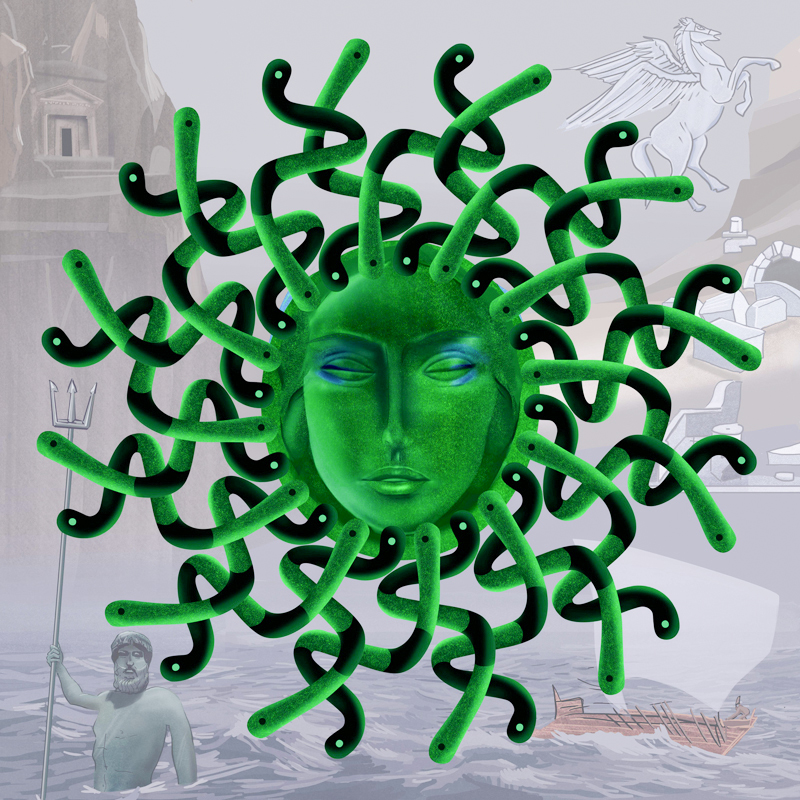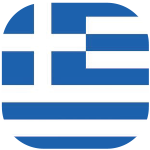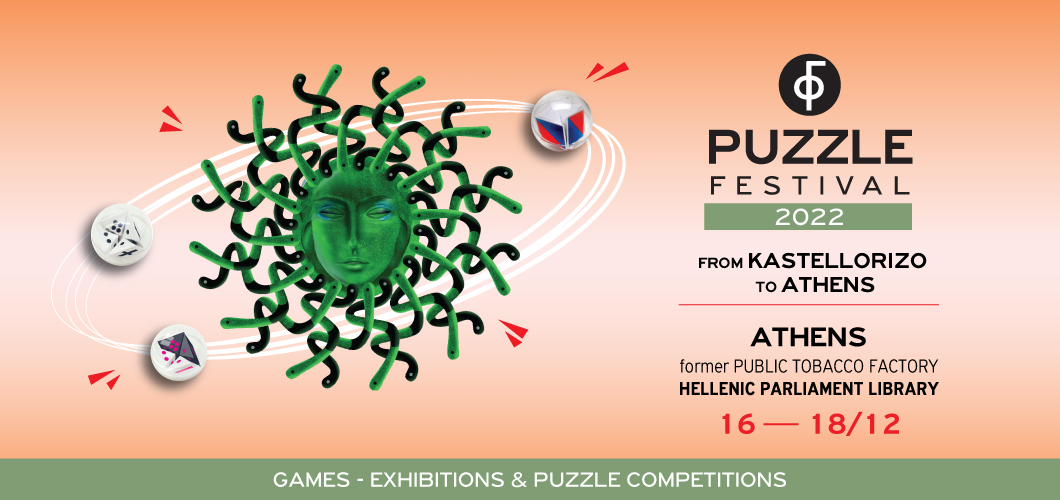In the Library of the Hellenic Parliament in the former Public Tobacco Factory
16-18 December 2022
From Kastellorizo and Patras we are transferred to Athens, to the Library of the Hellenic Parliament in the former Public Tobacco Factory. The Megisti Puzzle Museum (Kastellorizo) and the Association EN.I.G.MA (Union of Ideas, Puzzles, Mathematics) collaborate with the Library in a three-day Festival full of constructions and games.
The history of the Kastellorizo Puzzle Festival began in 2020. Then the mathematician Pantazis Houlis, former professor of the University of Western Australia, current collaborator with the University of Crete and co-founder of a company producing educational puzzles, founded the homonymous Museum. The Puzzle Museum currently has one of the largest collections of puzzles, worldwide. It was recently designated European Centre for Science, Technology and Art STARTS (Science+Technology+ARTS). At the suggestion and in collaboration with Eleni Grammatikopoulou, with many years of experience, significant successes and major events in the field of Science Communication, the establishment of the Puzzle Museum led to the idea of organizing a Kastellorizo Puzzle Festival, with the ambition of the remote island to produce and export culture.
But the story of the puzzles has its roots deep in time. Cleobulus of Lindos, one of the seven sages of antiquity, composed innumerable puzzles and riddles. During his time, Lindos became a center of literature and arts and he contributed to the restoration of the temple of Athena in his homeland. From the Dodecanesian Cleobulus and the 6th century. B.C., we are transported to the Dodecanese puzzle designers and puzzle makers of the 21st century. A.D., who, paying tribute to the city of godess Athena, travel with the Kastellorizo Puzzle Festival to the capital of Greece.
Next stop, then, is the Library of the Hellenic Parliament, a place of exploration and “guardian” of knowledge, collaborative learning and co-creation, accessible to young and old. There, Logic Puzzles meet Science and Culture through a series of actions, adapted to each age. In a world that is constantly changing, creative thinking leads to a better understanding of knowledge, beyond established educational standards. We address all those who are eager to approach scientific knowledge through different tools and ways of learning. Our goal is for young and old to reflect, experiment and, through discussions, presentations, interactive games and experiential workshops, to give their own solutions to puzzles. Big competitions of two-dimensional and three-dimensional puzzles, a treasure hunt in the bookcases and reading rooms of the Library, and the Village of Santa Claus, are some of the activities of the Festival.
We are waiting for you all at the former Public Tobacco Factory for a three-day celebration with games, exhibitions and puzzle competitions!
And do not be afraid of the Medusa of Megisti, she is demanding but lovable…
It will dominate every place, both as a logo and as the main puzzle to be solved!
Το The Lenorman Public Tobacco Factory… in a few words
In 1883, during the governing of Charilaos Trikoupis, a tax was imposed on tobacco. At the same time, the first public tobacco factories were created at state expense and their operation was determined. The employed workers are appointed by the Minister of Finance and supervised by directors and auditors, who are civil servants. In Athens, the first public tobacco factory was built in 1887 on Aristotelous Street and was destroyed in 1928 by fire.

The second public tobacco factory in Athens was built between 1928 and 1930 on Kifissou Street, now known as Lenorman, in the sparsely populated district of Kolokynthous remote from the center. The study for the construction of the building is being prepared by the civil engineers Pavlos Athanasakis and Antonis Ligdopoulos. The building, with a total area of 19,000 sq.m., is of industrial architecture, two-storey with a semi-basement and develops in a square plan. It consists of four wings, lined up around the building block, which internally create a large four-sided glass-roofed courtyard area of 1000 sq.m. from the interwar period to the 21st century. A completely synchronized and spacious building from the beginning, the Athens Public Tobacco Factory participates in events and adapts to developments that seal the political, economic, social and cultural history of Greece, as well as the subsequent transformation of its urban landscape, from the interwar period to the 21st century.
Its establishment, at a time when the cigarette making industry was flourishing, provided housing for twenty-five small medium-sized enterprises. On the ground floor, the tobacco cutting and packaging works are carried out, on the first floor the production of cigarettes and cigars and in the basement the storage of tobacco and the blend.
Without removing the original tenants, war preparation and World War II open its doors to the Army’s Military Tobacco Industry and Health Service, while parts of its basements are transformed into shelters. With the entry of the Germans into Athens, the spaces ordered by the Greek state pass into the hands of the occupying forces. In December the building was occupied by ELAS teams and was hit by British mortars during the British operations in the area of Kolonos. After the war, the declining course of the tobacco industry led several businesses to close. The Ministry of Social Welfare installs the “Kolokynthous Refugee Care Center” in the building, to house dozens of families of the needy, the helpless and refugees. The premises evacuated by the tobacco companies are attributed, mainly for storage purposes, to public services. In 1989, the Ministry of Culture proceeded with the designation of the Lenorman Tobacco Factory as a historical listed monument, along with its mechanical equipment. The building was granted, in 2000, by the Public Real Estate Service entirely to the Hellenic Parliament. Today it houses services and departments of the Library of the Parliament, as well as the Directorate of Publications and Printing of the Parliament.
Dr. Maria Vlassopoulou
Historian, Head of the Benaki Library & Collections of Political Figures Department Library Directorate of the Hellenic Parliament.
Peggy Dara
Architect-engineer NTUA, MSc Department of Buildings and Surroundings Directorate of Technical Services of the Hellenic Parliament

Why we use Medousa as a logo?

Medusa will be presented in Athens so that one of the most attractive puzzles (in many levels) ever built will become known to the general public. While according to Hesiod, the goddess Athena (the protector of Athens) was the one who helped Perseus defeat Medusa.
For the Kastellorizo Puzzle Festival that is travelling to Athens, the logo is a puzzle in the form of Medusa. Its purpose is to place the 24 snakes on the frame with the face of Medusa so that the snakes intersect in the same colors. It is an idea of Pantazis Houlis calculated to have a unique solution. The way snakes should unite is reminiscent of a new kind of matching puzzle that requires a specialized geometric thinking, due to the way in which snakes interact. The puzzle can also be used as a board game for more players.
The choice of Medusa is not accidental, as according to Aeschylus who mentions “Gorgonian fields of Cisthene” (Prometheus Bound, col. 793) and Strabo who verifies that Cisthene is Megisti, proves the Kastellorizian origin of Medusa. At the same time, many other relevant elements have been added, such as the coins of Megisti, the existence of a cave of the Cyclops (as part of ancient Lycia, which was the homeland of the archaeological Cyclops), etc







